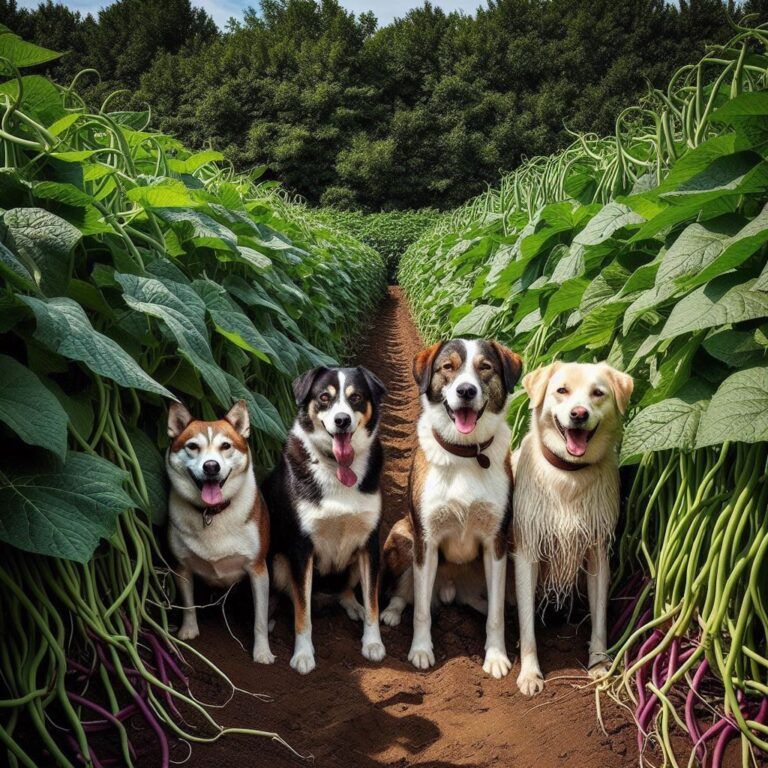Can Dogs Safely Eat Pumpkin
Certainly, dogs can consume pumpkins. When properly prepared, pumpkin can serve as a valuable supplement to your pet’s nutrition. It contains natural sources of fiber, along with essential vitamins A, C, and E, as well as minerals such as potassium and iron.
The Nutritional Benefits of Pumpkin for Dogs
Pumpkin, beyond its seasonal popularity, emerges as a nutritional gem for dogs. Understanding its nutritional composition sheds light on why it can be a valuable addition to their diet
Fiber Composition: The soluble fiber in pumpkin, composed of pectins and gums, plays a multifaceted role in digestive health. It acts as a gentle regulator for bowel movements, making it particularly beneficial for dogs dealing with occasional constipation or diarrhea.
Simultaneously, insoluble fiber in pumpkin contributes to overall gastrointestinal health. It adds bulk to the stool, aiding in the prevention of common digestive issues and promoting a healthy gut.
Vitamins and Minerals: Vitamin A, abundantly present in pumpkin, is crucial for maintaining healthy skin, coat, and optimal immune function.
The conversion of beta-carotene into vitamin A in the body adds an extra layer of health benefits.
The inclusion of vitamins C and E contributes to your dog’s immune resilience, protecting against free radicals and supporting overall well-being.
Potassium, an essential mineral found in pumpkin, supports proper muscle and nerve function, ensuring the smooth functioning of vital bodily processes.
Weight Management: Pumpkin’s low-calorie nature makes it a strategic addition to the diet of dogs struggling with weight management.
It provides a satisfying and flavorful component to meals without contributing to excess caloric intake.
Best Practices for Feeding Pumpkin to Your Dog
Ensuring that your dog reaps the full spectrum of benefits from pumpkin involves thoughtful incorporation and adherence to best practices
Moderation as a Guiding Principle: The introduction of any new food, including pumpkin, should follow the principle of moderation. Begin with small portions, gradually increasing as your dog acclimates to this new addition.
This cautious approach minimizes the risk of digestive upset and allows for a seamless transition.
Selecting the Right Form of Pumpkin: Fresh or canned pumpkin without additives stands out as the optimal choice. These forms provide the pure essence of pumpkin without the potential drawbacks of added sugars or spices.
Steering clear of pumpkin pie filling, often laden with sugars and spices, ensures that your dog enjoys the nutritional benefits without unnecessary additives.
Observing Your Dog’s Reaction: The individuality of dogs extends to their dietary tolerance. Observing your dog’s reaction to pumpkin is a crucial step in this nutritional journey.
Look for signs of allergies or digestive discomfort and adjust portions accordingly.
Dietary Diversity: While pumpkin offers a myriad of benefits, recognizing the importance of dietary diversity is paramount.
Alternating with other nutrient-rich snacks, such as small portions of cooked lean meats such as chicken, turkey, or beef, specially formulated dog treats, or bits of cooked fish or egg, ensures a comprehensive and balanced nutritional approach.
Let’s Wrap This Up
In conclusion, the affirmative response to whether dogs can safely eat pumpkins unveils a world of nutritional possibilities for our canine companions.
The detailed exploration of its fiber composition, vitamin and mineral content, and role in weight management underscores its status as a versatile and healthful addition to their diet.
As you embark on incorporating pumpkin into your dog’s meals, consider the uniqueness of their individual needs. Seeking guidance from your veterinarian ensures a personalized approach, aligning the nutritional journey with their specific health profile.
So, go ahead, and embrace the nutritional richness of pumpkin for your dog. In doing so, you’re not merely offering a treat; you’re nurturing their well-being, one carefully considered bite at a time.
Your dog will not only relish the taste but also reap the rewards of a thoughtfully crafted and nutritionally balanced diet tailored to their unique needs.







